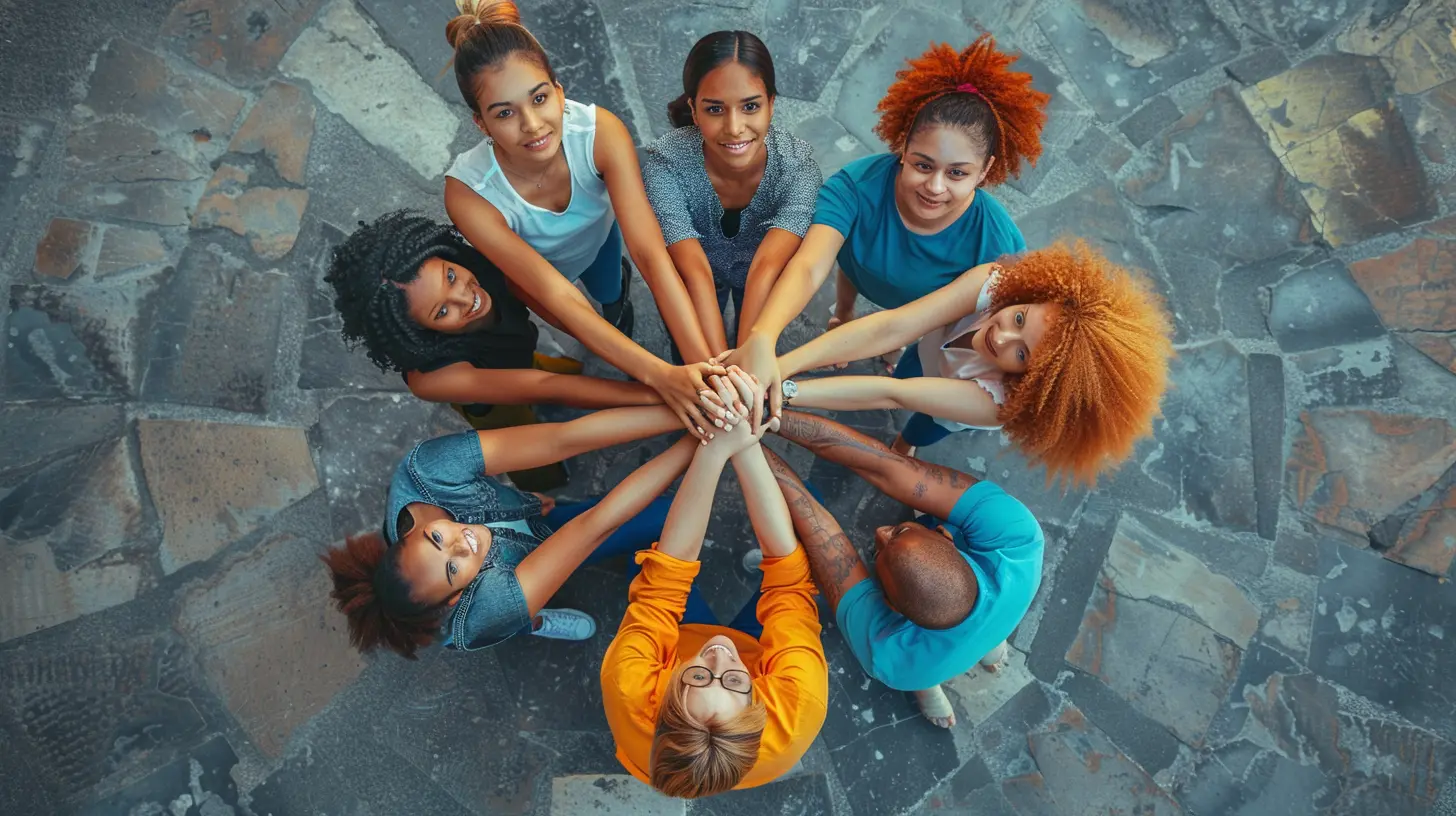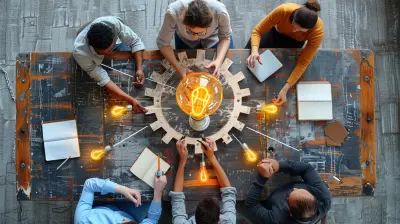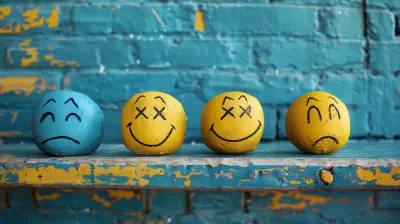Why Collaboration is Crucial in Preparing Students for the Future Workforce
21 November 2025
The world is changing fast. Technology is evolving at an astonishing speed, new industries are emerging, and the way we work is transforming almost every day. With all these changes, one thing is clear: the future workforce will look very different from what we know today. But how can we prepare students for these shifts? What skills will they need to thrive in a world that’s constantly evolving?
One of the key skills that students need to develop is collaboration. And no, I’m not just talking about group projects where one person does all the work while everyone else slacks off. I’m talking about genuine, meaningful collaboration — where individuals come together, share ideas, solve problems, and work as a team. Collaboration isn’t just a buzzword; it’s an essential ingredient for success in the 21st-century workforce.
In this article, we’ll dive deep into why collaboration is crucial in preparing students for the future workforce, how it enhances key skills, and why it’s a game-changer in education.
The Changing Nature of Work: Why Collaboration Matters
The Future Workforce Will Be Collaborative
Think about how the workplace has transformed in the last decade. More companies are adopting remote work, cloud-based platforms, and collaborative tools like Slack, Zoom, and Microsoft Teams. In fact, the rise of global teams means that workers are collaborating with people in different time zones, countries, and cultures more than ever before.As technology keeps advancing, automation and artificial intelligence (AI) are taking over repetitive tasks, which means that jobs requiring human creativity, critical thinking, and teamwork are on the rise. Sure, machines can crunch numbers, but they can’t brainstorm creative ideas, develop innovative solutions, or communicate complex concepts as well as humans can. This is where collaboration becomes a game-changer.
Collaboration Reflects Real-World Work Scenarios
In today’s professional world, rarely does anyone work in isolation. Most projects require input from multiple departments, team members, or even external partners. Whether you’re a software engineer, a marketing professional, or a healthcare worker, chances are you’ll need to communicate and collaborate with others to get the job done.Imagine a tech company developing a new app. The software engineers need to work with designers, marketers, customer support, and business analysts to create a product that users will love. It’s not just about writing code; it’s about understanding user needs, designing intuitive interfaces, and strategizing how to launch the product successfully. This level of collaboration is something students need to experience before they enter the workforce.
The Key Benefits of Collaboration in Education
1. Enhances Communication Skills
Let’s be honest, communication is one of the most important skills in the workplace. Being able to clearly articulate your ideas, listen to others, and engage in productive discussions is crucial in any job. But communication isn’t just about talking — it’s about active listening and understanding different perspectives.When students collaborate, they’re forced to communicate their thoughts and ideas to their peers. They have to explain their reasoning, defend their positions, and sometimes, even compromise. Whether it’s working together on a science project or preparing a group presentation, these interactions help students develop the communication skills they’ll need in their future careers.
2. Fosters Critical Thinking and Problem-Solving
Collaboration isn’t just about dividing tasks; it’s about coming together to solve problems. When students work together, they’re exposed to different viewpoints and approaches to tackling a challenge. This diversity of thought encourages critical thinking and creative problem-solving.For instance, in a group project, one student might come up with an idea that another student hadn’t considered. By discussing different approaches, students learn to evaluate options, think critically, and make informed decisions. These are the same skills they’ll need in the workplace, where every decision can impact the success of a project or business.
3. Builds Leadership and Teamwork Skills
Not everyone is a natural-born leader, but collaboration gives students opportunities to step up and take charge. Whether it’s organizing a group meeting, delegating tasks, or ensuring everyone stays on track, students learn valuable leadership skills when they collaborate.At the same time, students also learn how to work as part of a team. They discover how to contribute their strengths, support their peers, and work towards a common goal. These teamwork skills are essential in the workplace, where success often depends on the ability to work well with others.
Preparing Students for a Collaborative World
1. Emphasizing Project-Based Learning
Project-based learning (PBL) is a powerful way to integrate collaboration into education. In PBL, students work on real-world projects that require teamwork, problem-solving, and critical thinking. Instead of passively listening to lectures, students engage in hands-on activities that mirror the challenges they’ll face in the workforce.For example, a group of students could be tasked with designing a solution to a community problem, such as reducing plastic waste or improving public transportation. To complete the project, they’ll need to collaborate, research, innovate, and present their findings — all valuable skills for the future workforce.
2. Incorporating Technology to Facilitate Collaboration
Technology plays a huge role in modern collaboration. Tools like Google Docs, Trello, and Zoom make it easier for people to work together, even when they’re miles apart. In the classroom, teachers can leverage these tools to teach students how to collaborate effectively in a digital environment.For instance, students can use online platforms to work on group projects, share resources, and provide feedback to one another. By incorporating technology into collaborative activities, students gain experience using the same tools they’ll encounter in the workplace.
3. Encouraging Cross-Disciplinary Collaboration
In the real world, collaboration often happens across different disciplines. In education, this means breaking down the silos between subjects and encouraging students from different fields to work together. For example, science students might collaborate with art students on a project that combines technology and design, or business students might work with computer science students to develop a new app.This type of cross-disciplinary collaboration prepares students for the multifaceted nature of the modern workforce, where diverse teams come together to achieve common goals.
Overcoming the Challenges of Collaboration
Of course, collaboration isn’t always smooth sailing. Anyone who’s ever worked on a group project knows that challenges can arise. Some students may dominate discussions, while others may struggle to contribute. Conflicts can occur, and group dynamics can become strained.But these challenges shouldn’t be seen as obstacles — they’re learning opportunities. In the process of overcoming these hurdles, students learn valuable conflict resolution skills, patience, and how to navigate different personalities. These are all critical skills they’ll need in the workplace, where not every team will get along perfectly.
Moreover, teachers play a crucial role in guiding collaboration. By setting clear expectations, providing guidance, and teaching students how to work together effectively, educators can help students get the most out of collaborative experiences.
How Schools Can Foster a Collaborative Mindset
1. Creating a Culture of Collaboration
Collaboration isn’t just a skill — it’s a mindset. Schools should strive to create a culture where collaboration is encouraged and celebrated. This means creating opportunities for students to work together, whether it’s through group projects, team-based extracurricular activities, or even peer mentoring programs.Teachers can also model collaborative behavior by working together with colleagues and involving students in decision-making processes. When students see the value of collaboration in action, they’re more likely to embrace it themselves.
2. Providing Collaborative Spaces
The physical environment plays a big role in fostering collaboration. Traditional classrooms, with rows of desks facing the front, aren’t exactly conducive to teamwork. Schools should consider creating flexible learning spaces where students can easily work together.This could mean setting up collaborative workstations, creating breakout rooms for group discussions, or providing access to digital tools that facilitate teamwork. By creating spaces that encourage collaboration, schools can help students develop the skills they’ll need in the workforce.
Conclusion: Collaboration is Key to Future Success
In an ever-changing world, where new technologies and industries are constantly emerging, students need more than just technical skills to succeed. They need the ability to collaborate effectively with others, share ideas, solve problems, and work as part of a team.Collaboration isn’t just about working together — it’s about preparing students for the complex, interconnected world they’ll be stepping into after graduation. It’s about giving them the tools they need to navigate the challenges of the future workforce, where teamwork and communication are often the keys to success.
So, whether it’s through project-based learning, cross-disciplinary collaboration, or the use of digital tools, educators must prioritize collaboration in the classroom. After all, the future workforce won’t be built by individuals working in isolation, but by teams coming together to achieve great things.
all images in this post were generated using AI tools
Category:
CollaborationAuthor:

Bethany Hudson

